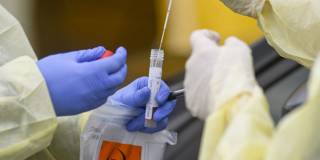Now that the United States has finally started to reduce its coronavirus infection rate, some political leaders have rushed to ease safety restrictions. But without a three-pronged strategy of testing, contact tracing, and mandatory assisted quarantine, the virus is likely to keep re-emerging, with or without mass vaccination.
CAMBRIDGE – After a year of steadily increasing COVID-19 case counts, the United States may finally be at an inflection point. The recent overall decline in the number of new infections represents an opportunity finally to eliminate the virus within US borders, and to begin to eradicate it globally. But this window may not be open for long, given the emergence of new, more transmissible variants and a resurgence of cases in some parts of the Midwest.

CAMBRIDGE – After a year of steadily increasing COVID-19 case counts, the United States may finally be at an inflection point. The recent overall decline in the number of new infections represents an opportunity finally to eliminate the virus within US borders, and to begin to eradicate it globally. But this window may not be open for long, given the emergence of new, more transmissible variants and a resurgence of cases in some parts of the Midwest.